IN THE MYSTERY CAVE (2)
By:
June 16, 2023
Second in a three-part series, by HILOBROW friend Colin Dickey, on Betty Boop in Snow-White, Twin Peaks, and the erotic life of things.
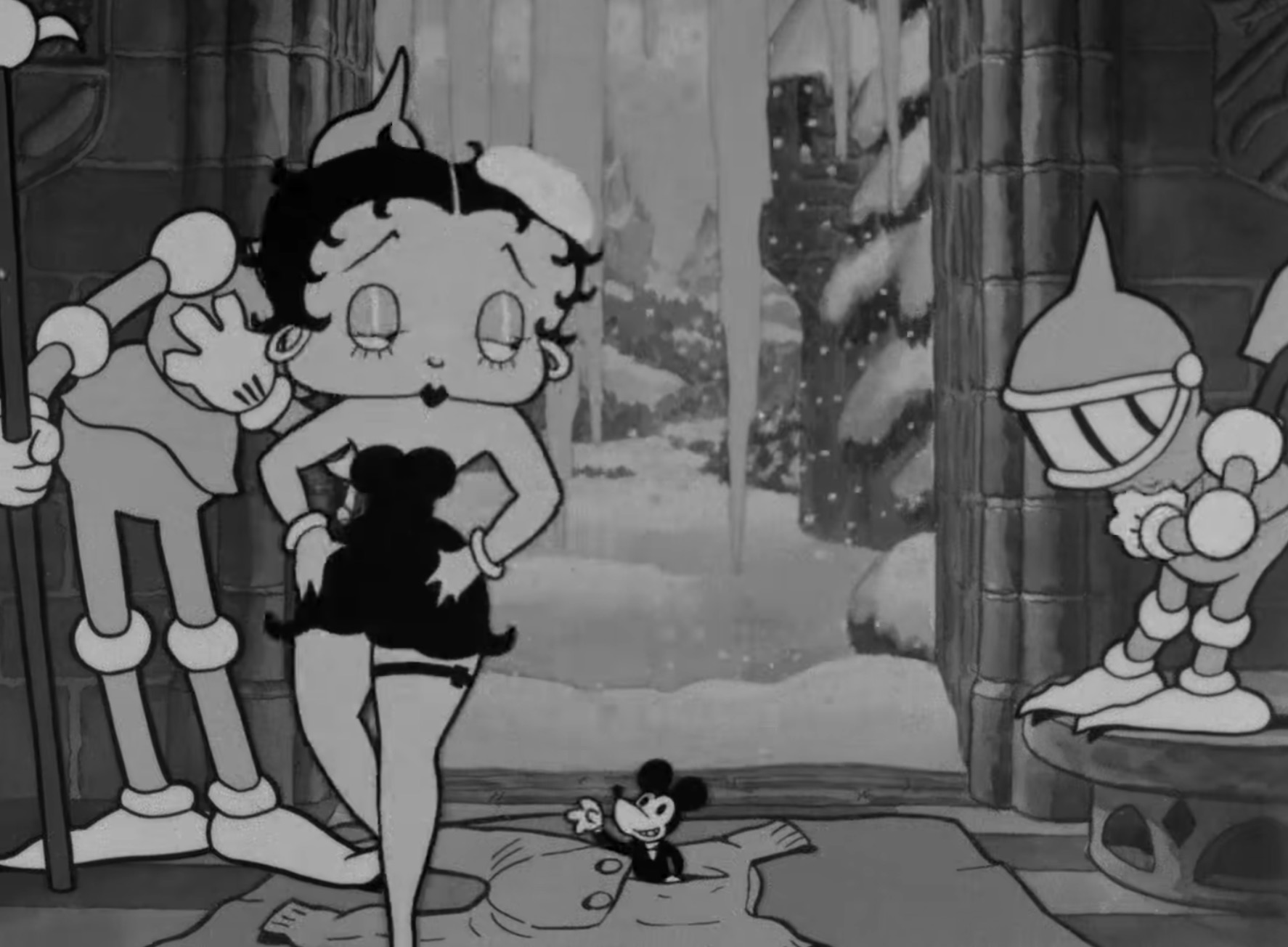
Betty Boop in Snow-White is an animated film that is also very much a film about animation — about the world come alive, where things that would normally be static instead have a life and motion. From the very beginning, there is a surfeit of gags and visual noise. As Betty arrives to see her stepmother, the icicles overhanging the door curl up out of the way for her, and then join her in a brief song. Koko and Bimbo, as palace guards, await her; Koko puts down a rug for her to walk on, and then Bimbo throws down a pair of long underwear, from which a mouse — an obvious reference to rival Mickey Mouse — pops out, tipping his hat to Betty. As Betty, Koko and Bimbo canter down the entry hall, suits of armor bow to Betty as she passes; as they stand up straight again, they collapse and fall apart. Rather than this associative dream logic of kinetic bodies in motion being constrained in the geographical confines of the Mystery Cave, it happens instead in nearly every frame of the eight-minute film.
Something similar will gradually happen in Twin Peaks as well. For the figures in Cooper’s Dream, we will come to understand by Season Two, are not merely the manifestations of his subconscious. They are all-too-real, residents of a place called the Black Lodge. They are supernatural and have begun to invade the real, mundane world. The point of entry is a place called Glastonbury Grove, deep in Ghostwood Forest: a ring of sycamore trees, a black pool in the middle — under certain conditions, the portal opens, red curtains appear, and one can enter the Black Lodge. Or, as it happens, denizens of the Black Lodge may escape; for, as with Snow-White, Twin Peaks is a narrative in which the libidinal energy of the Mystery Cave has escaped and has begun to invade the real world.
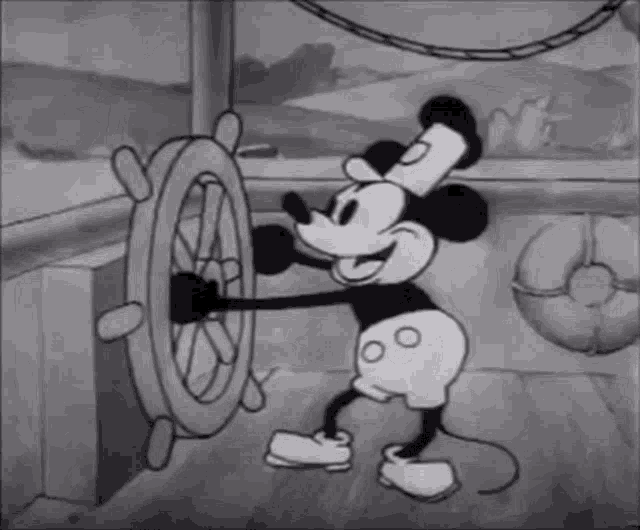
Compare this to the other classic animated Snow White. Like Fleischer, Walt Disney began his career entranced by the world of mindless action, but from the beginning, he looked for ways to constrain this uncontrollable motion, to give it reason and sense. His most successful figure, who will become one of the most instantly recognizable images of the twentieth century, Mickey Mouse, is explicitly born of the tradition of the minstrel show: Mickey is in blackface, with spotless white gloves and racist, grotesquely large eyes. Mickey Mouse’s purpose is to delight and surprise, but also to remind white audiences that this kind of motion is culturally beneath them, and not of them. It is a thing that they are to be fascinated by and perhaps even long for, but it will be coded as racially other, barbaric and the result of one’s inability to control one’s passions and emotions.
When he set out to make his first feature film, Snow White and the Seven Dwarfs, he began by focusing on the Dwarfs, imagining them as the central players and envisioning them as exemplars of the grotesque and comic possibilities of the strange. With each story revision, however, these elastic figures receded further into the supporting cast, as the plot becomes more and more focused on the titular heroine and the cruelty of her stepmother. The film that will ultimately result is a paragon of misogyny: the tale of how a sexually mature girl must navigate the perilous land between her father’s castle and her husband’s castle.
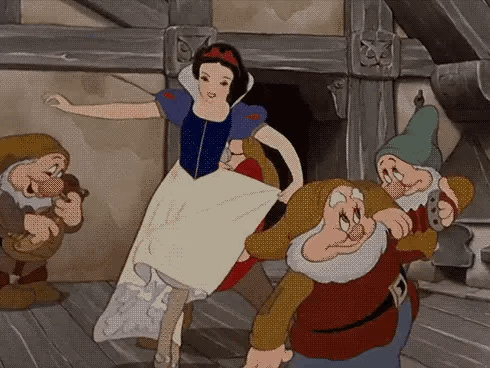
As Disney’s Snow White and the Seven Dwarfs took shape, its structure — the initial conflict, the rising action, climax, and resolution — all became organized around creating a central effect: Snow White as ready for marriage, as displayed by her beauty, her sexual desirability and her domestic suitability. This desire to tailor a film increasingly around a single, dominant narrative echoes an essay from almost a century earlier: Edgar Allan Poe’s philosophy of composition. There, Poe stresses that “in almost all classes of composition, the unity of effect or impression is a point of the greatest importance,” and that, without this, “the deepest effects cannot be brought about.” The skillful literary artist, Poe argues, if wise, “has not fashioned his thoughts to accommodate his incidents; but having conceived, with deliberate care, a certain unique of single effect to be wrought out, he then invents such incidents — he then combines such events as may best aid him in establishing this preconceived effect.”
Increasingly, the elasticity of Disney’s protagonists in feature films will be relegated to this desire for a single, unifying effect. What was once the free play of libidinous energy becomes, for Disney, the ramifications of certain behavior or innate personality traits. Thus, the wild and shocking bodily changes that define Pinocchio are restricted to easily moralized gestures: his lying causes his nose to grow, while drinking, gambling, and smoking turn him into a donkey and being a “good boy” will make him human. The only other place in which you’ll find the formerly anarchic motion of Disney’s early films will be in clearly quarantined dream sequences and their close analogues, such as the “Elephants on Parade” sequence in Dumbo.
In Fleischer’s Snow-White, on the other hand, while the narrative of the wicked stepmother who’s sexually jealous of Betty Boop also appears, it is as if the film is almost entirely uninterested in this narrative — the narrative beats are perfunctory at best, and it is often the case that the film moves forward simply by its own frenetic energy. Nor is there much of an attempt at any kind of unity of effect. The plot beats are so superficial that each character seems to be doing nothing other than gyrating their way into and out of the Mystery Cave, adrift in a world where the things have already come alive. Understanding Snow-White comes from this recognition, that the energy of the Mystery Cave has escaped and swamped the film’s feeble attempts at telling the stock story of Snow-White and her wicked stepmother.
The two Snow Whites offer very different ways of telling stories. And on a surface level, the town of Twin Peaks appears to echo Disney’s version: the protagonists by and large are young women, who are graduating high school, reaching sexual maturity, and beginning the process of moving from their father’s houses to their eventual husband’s houses. It’s a perilous time, fraught with danger, but if they succeed, they will end up happily wedded and in houses of their own, successful marriages like Leland and Sarah Palmer, Ben and Sally Horne, Big Ed and Nadine.
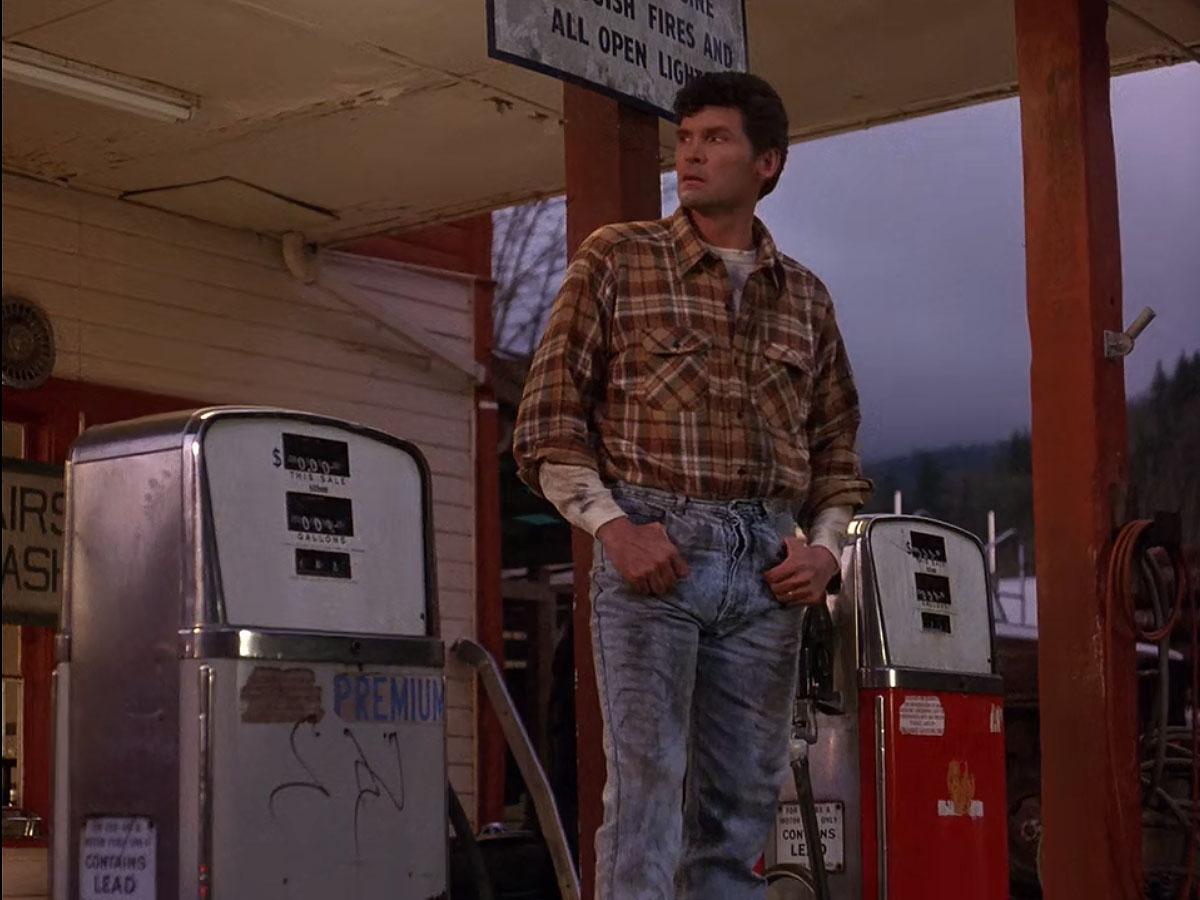
Of course, in a town like Twin Peaks, nothing is as it seems. The surface veneer, broken open by the murder of Laura Palmer, is revealed to be a complete fiction. While nearly everyone has a partner, no one is happy: unrequited longing, affairs, cheating, prostitution, sexual abuse, rape and murder are all rampant. This is the true narrative of Twin Peaks.
Those without power, like Big Ed, for example, or Donna, or Pete Martell, cope with this through longing and melancholia. Those with power, on the other hand — Benjamin Horne and his brother Jerry, Leo Johnson, and to an extent, Leland Palmer — consume bodies, treating women as interchangeable. If someone like Big Ed longs for a shake-up that would allow him to leave Nadine for Norma, Ben Horne works to keep the status quo unchanged.
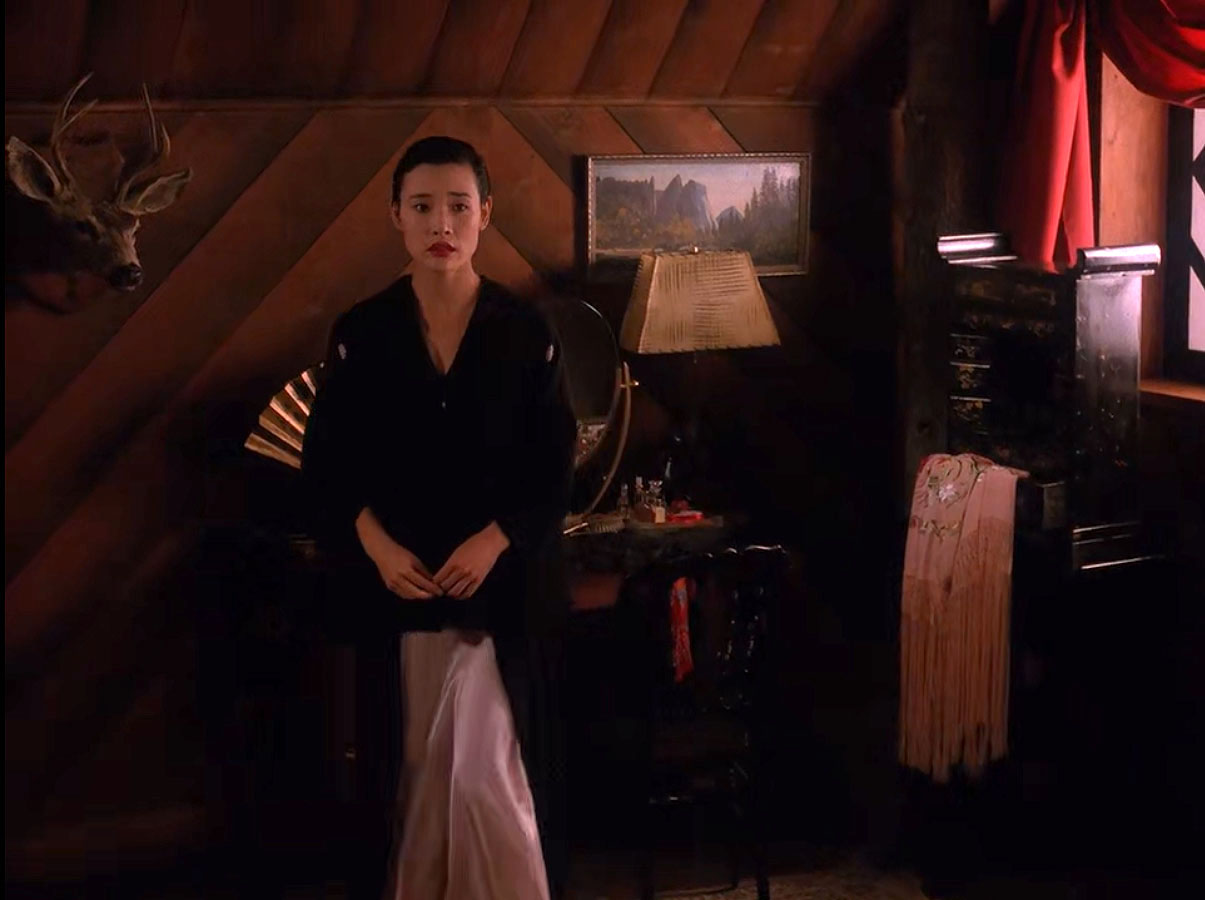
In a town overrun with repressed and hidden libidinal energy, where does this energy go? In Twin Peaks, it goes into the world of things. The very opening shot of the series, after the credits finish, is of an art deco lamp next to Josie Packard, something that at some point in history might have signaled a look both elegant and refined, but, in the context of the Martell household, instead looks cheap and tawdry. It is tempting to read the object world of Twin Peaks as kitsch, as this is how things first appear: used-up commodities whose affect is, at least to the viewer, now nothing but ironic. But as the show progresses it becomes clearer that the world of objects is suffused with a different kind of energy.
There are, for example, the sunglasses. Prior to Laura’s murder, Donna is the sweet, girl next door, who harbors a secret longing for James Hurley. After Laura’s death, Donna begins wearing Laura’s pair of sunglasses; they come to represent the change that has taken over in her, as she becomes a chain-smoking femme fatale who is finally able to capitalize on her desire for James.
As the mystery unfolds, Agent Cooper and Sheriff Harry S. Truman will repeatedly come upon objects that seem at first like clues — the locket, for example — but these are not clues in the traditional sense of a detective script, especially since so many of them end up being red herrings anyway. What they are instead are totemic objects, imbued with emotional power and mystery by their possessors.
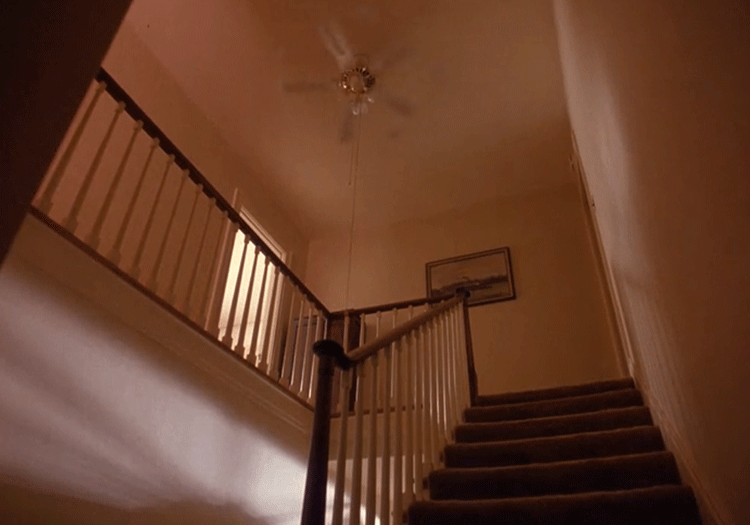
The things of Twin Peaks are harbingers of various kinds of desire, both good and bad, and they express a resonance that is otherwise brutally repressed in the picture perfect veneer of the town. Because they appear merely as inert, kitchsy commodities, they can be used as vehicles for a secret, subterranean desire that runs through the town, repressed by its surface level heteronormative and patriarchal constructions. The ceiling fan that marks Killer BOB’s entrance into the material world, the framed photograph that Mrs. Tremond and her grandson Pierre give to Laura as a means for her to enter the Black Lodge, the missing ring that Chet Desmond picks up shortly before his disappearance — the same ring that will has led to Theresa Banks’ death and will eventually lead to Laura’s.
As Sheli Ayers asked in a 2004 essay on the show, “Who can BOB, MIKE, and other spirits of the Black Lodge be, if not the reflection of used-up things, the sometimes vengeful spirits of dead commodities?” In the world of Twin Peaks, repressed desire is sublimated into objects, which then take on a libidinal energy of their own. The kind of free, associative world of the Dream Sequence, the Mystery Cave, or the Black Lodge, spills forth through the world of objects into the real world, crossing the boundary and taking over the universe of the real.
IN THE MYSTERY CAVE: PART 1 | PART 2 | PART 3.
MORE COLIN DICKEY at HILOBROW: KAIROS (Hermenautic Tarot series) | ANIMAL MAGNETISM (cross-posted series) | WIDESPREAD PANIC (Grok My Enthusiasm series) | ACÉPHALE (#Squadgoals series).
